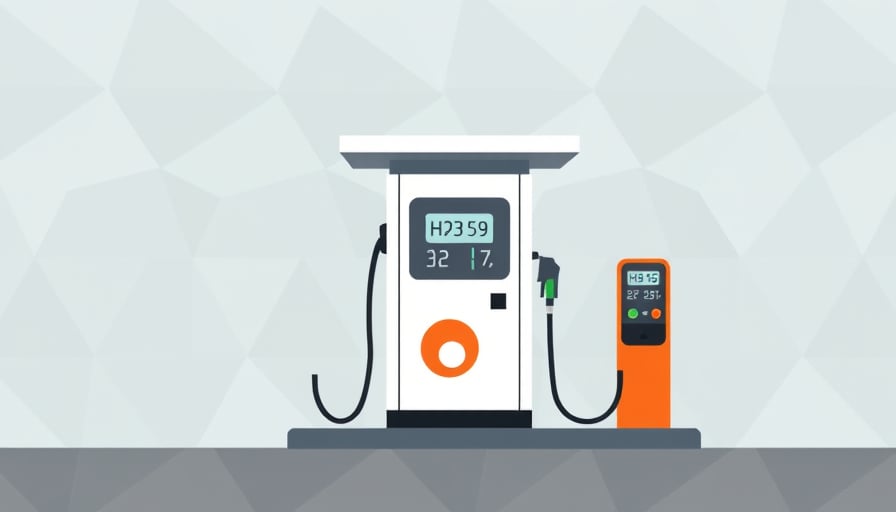BMW Secures €273 Million Subsidy for Hydrogen‑Fuel Cell Programme
BMW Group announced on 17 November 2025 that it will receive a substantial government subsidy of approximately €273 million for its hydrogen‑fuel cell programme, the HyPowerDrive project. The funding is jointly provided by the federal German government and the state of Bavaria and is earmarked to accelerate the commercial rollout of hydrogen‑powered vehicles from 2028.
The investment aligns with the company’s broader strategy to diversify its powertrain portfolio and reduce emissions from its fleet, while maintaining its competitive position in the luxury automotive sector. In parallel, BMW is actively exploring the use of alternative fuels such as HVO100 and E‑fuels in collaboration with fleet operators, positioning these bio‑fuels as a bridge to a post‑internal‑combustion future. The Group continues to develop high‑performance variants of its SUV range, with the X3 M50 highlighted as a versatile model that balances power and practicality.
1. Strategic Context
1.1. Hydrogen as a Future Mobility Option
Hydrogen fuel‑cell technology is gaining traction as a zero‑emission alternative for heavy‑duty and long‑range vehicles. In Germany, the federal government’s 2025 hydrogen strategy earmarks up to €1.2 billion for research, infrastructure and market deployment. BMW’s HyPowerDrive aligns with this policy, positioning the Group to benefit from early‑stage commercialisation and potential regulatory incentives.
1.2. Complementarity with Bio‑Fuel Initiatives
While hydrogen represents a long‑term solution, the immediate adoption of HVO100 (hydrotreated vegetable oil) and E‑fuels (synthetic fuels) allows BMW to offer low‑carbon alternatives to fleet operators. This dual‑track approach mitigates risks associated with hydrogen infrastructure development and regulatory timelines.
1.3. Maintaining Performance Leadership
BMW’s continued focus on high‑performance SUVs—exemplified by the X3 M50—ensures the Group retains its premium positioning. By integrating advanced powertrains into performance models, BMW signals to customers that sustainability need not compromise driving dynamics.
2. Market Dynamics and Competitive Landscape
| Segment | Key Players | Current Focus | Competitive Advantage |
|---|---|---|---|
| Hydrogen Fuel Cells | Toyota (Mirai), Hyundai (Nexo), Daimler (Mercedes-Benz GLC F‑Cell) | Commercial rollout, cost reduction | Early market entry, brand recognition |
| Bio‑Fuel Adoption | Volvo (HVO projects), Mercedes-Benz (E‑fuel trials) | Fleet conversion, R&D partnerships | Strong ESG credentials |
| High‑Performance SUVs | Audi (RS3), Porsche (Macan GTS) | Power, luxury, technology | Brand prestige, engineering heritage |
BMW’s subsidy‑backed programme places it in the top tier of hydrogen‑focused manufacturers, comparable to Toyota and Daimler. The Group’s existing hydrogen research base (e.g., the Hydrogen Development Centre in Munich) provides a solid foundation for rapid deployment. The partnership with Bavaria also facilitates access to regional hydrogen pipelines and storage facilities, strengthening supply chain reliability.
3. Economic and Regulatory Implications
- Cost Structure: Hydrogen fuel cells currently cost 2–3× higher than conventional internal combustion engines. Subsidies help offset R&D and production scale‑up costs, allowing the Group to price hydrogen models more competitively.
- Emission Targets: Germany’s 2030 climate targets require a 55 % reduction in greenhouse gas emissions compared to 1990. BMW’s hybrid strategy supports compliance by offering low‑carbon options across multiple vehicle segments.
- Infrastructure Development: The Group’s collaboration with Bavarian authorities will likely accelerate the deployment of hydrogen refuelling stations, reducing range anxiety for early adopters.
- Market Adoption: Early commercial availability (2028) positions BMW ahead of many competitors, potentially capturing a growing share of fleet operators seeking low‑emission solutions.
4. Risk Assessment
| Risk | Mitigation |
|---|---|
| Technology Maturity | Leveraging proven hydrogen fuel‑cell components from partner suppliers; incremental roll‑out strategy |
| Infrastructure Lag | Engaging with regional governments and energy providers to co‑fund refuelling stations |
| Regulatory Uncertainty | Maintaining diversified fuel strategy (HVO100, E‑fuels) to adapt to changing policies |
| Cost Overruns | Subsidy covers €273 million; strict project management and cost‑control protocols |
5. Outlook
BMW’s hydrogen programme, backed by a significant government subsidy, is poised to accelerate its entry into the hydrogen vehicle market while maintaining a robust portfolio of low‑carbon alternatives. The Group’s strategy reflects a broader industry trend of combining cutting‑edge propulsion technologies with pragmatic bio‑fuel solutions to meet evolving regulatory frameworks and consumer expectations. As the company advances the HyPowerDrive project and continues to refine high‑performance SUVs like the X3 M50, it demonstrates a balanced commitment to both sustainability and premium performance—an approach likely to resonate with stakeholders across the automotive ecosystem.




